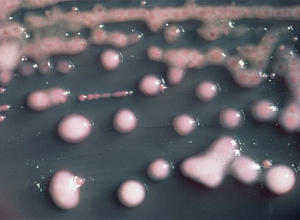Public healthNDM-1 may herald the end of antibiotic era
Researchers warn that the spread of a drug-resistant bacterial gene could herald the end of antibiotics; the bleak prediction follows his research into a drug-resistant bacterial gene called NDM-1, or New Delhi metallo-β-lactamase 1, which was first identified in India; researchers identified 143 cases of NDM-1 across India and Pakistan, but 37 — a surprisingly high figure — in the United Kingdom

Antibiotic-resistant NDM-1 // Source: thefirstpost.co.uk
The spread of a drug-resistant bacterial gene could herald the end of antibiotics, researchers warned the other day. “In many ways this is it,” Tim Walsh at Cardiff University, UK, told The Guardian newspaper. “This is potentially the end.”
Walsh’s bleak prediction follows his research into a drug-resistant bacterial gene called NDM-1, or New Delhi metallo-β-lactamase 1, which was first identified in India. In the study, published in The Lancet Infectious Diseases, Walsh’s team investigated cases of multi-drug resistant Enterobactericeae infections — which include E.Coli and Salmonella — in India, Pakistan, and the United Kingdom from 2003 to 2009, to find out how many NDM-1 had a hand in. They identified 143 cases of NDM-1 across India and Pakistan, but 37 — a surprisingly high figure — in the United Kingdom (“Superbug found in British patients returning from treatment in Asia,” 11 August 2010 HSNW).
Jessica Hamzelou writes that the NDM-1 gene works by producing an enzyme that safeguards bacteria against β-lactam antibiotics, which include penicillin. These antibiotics have a ringed structure which acts to halt the replication of bacteria. The enzyme breaks this ring, rendering the drug ineffective. Other β-lactam antibiotic-resistant bacteria have genes that work in the same way.
These infections are usually treated with carbapenems — the “last resort” antibiotics which have the broadest action and the lowest resistance rates and tend to be used when all else fails. What is worrying health professionals is that the NDM-1 is resistant to carbapenems, too, and can be transferred between different bacteria.
Hamzelou notes that other bacteria have been known to produce similar enzymes, but only a few U..K cases have been resistant to carbapenems, and these have not been able to transfer the resistance to other bacteria.
Carbapenem-resistant genes have been spreading elsewhere, however. The 2009 case of a woman in Sweden with a carbapenem-resistant infection picked up in India prompted the U.K.’s Health Protection Agency to issue a National Resistance Alert at the beginning of last year. In it, the HPA warned of a slow international accumulation of bacteria armed with the resistant gene, listing spreads of infection in the United States, Israel, Greece, and Turkey — and the gene is spreading in India, which some doctors think is unsurprising. “There is little drug control in India and an irrational use of antibiotics,” a Delhi-based physician told the BBC.
Indeed, from being rarely observed just a few years ago, the gene is turning up in between 1 and 3 percent of Enterobacteriaceae infections said Walsh. “It is absolutely staggering,” Walsh told the Guardian. “Because of international travel, globalisation and medical tourism, [the gene] now has the opportunity to go anywhere in the world really quickly.”
The group think the gene may have traveled to the United Kingdom as a stowaway on patients traveling to India for cheap surgery. “The potential…for NDM-1-encoding plasmids to become endemic worldwide are clear and frightening,” say the authors in the paper.
